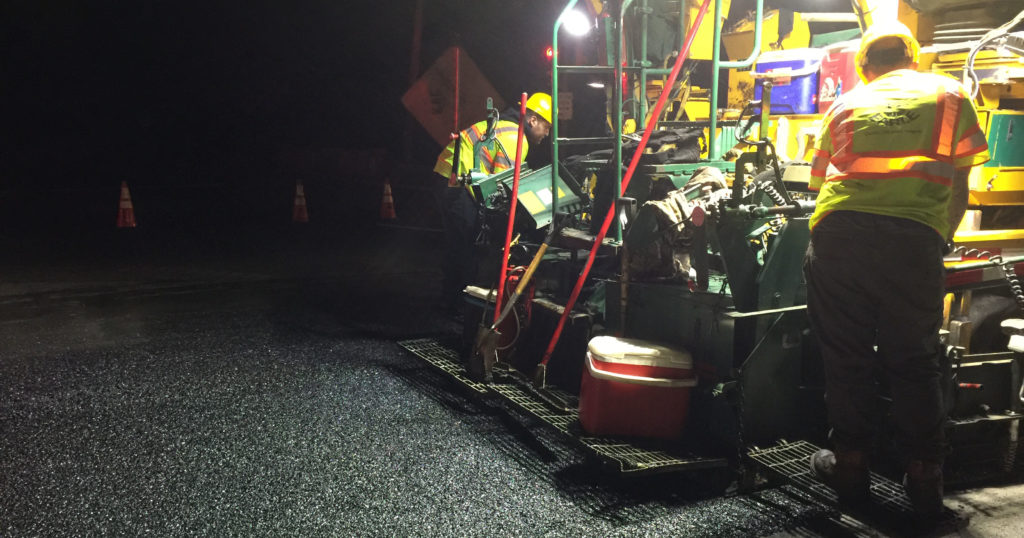When fiberless SMA and OGFC are no problem
Aug 13, 2018
Anyone familiar with a SMA or OGFC mix is also familiar with the expense and hassle of fibers.
“Fibers can be a challenge at the plant,” said Rick Ahlbach, quality control supervisor at Curran Contracting in Illinois. “There can be added costs if additional personnel have to watch the loading of the fibers; And if the machine goes down, the contractor is down.”
The asphalt industry is becoming more aware of ways to manage the expense and hassle of fibers in these mixtures, and a WMA additive like Evotherm® is one money-saving way. What does the process of getting a fiberless mixture with a WMA additive look like? And is it possible to remove fibers and have the same performance? Absolutely. Let’s unpack it.
Fiberless SMA
“We don’t need to use fibers when we add Evotherm,” explained Ahlbach. “This saves money and allows us to reduce our AC content because the fibers are eliminated and are no longer soaking up the liquid asphalt. Evotherm helps us produce a more workable and cost-effective SMA.” For specifications that may require the use of fibers, the addition of Evotherm to these mixes can decrease the amount of fibers used.
The Illinois Tollway created a new supplemental specification for the 2018 paving season that is written to make contractors utilize chemistry if they want to take advantage of the higher asphalt binder replacement (ABR) allowances. The ABR cap has increased to 45 percent but contractors must use an additive like Evotherm if the ABR content is over 20 percent. The Tollway also requires contractors to pass the Disk-Shaped Compact Tension Test (DCT), a flexibility cracking test, with a value at or above 600 J/m2.
“Most contractors aren’t willing to leave 25 percent ABR on the table,” explained Ahlbach. “It would result in more virgin AC, which is the most expensive material in an asphalt mix. Evotherm saves us money by helping us eliminate fibers but it also gives us a density insurance policy.”
Tilcon, a contractor in Wharton, New Jersey, has also benefited from using Evotherm in their SMA mixtures. View our October 2016 story here.
“The Evotherm allows us to reduce the temperature of the mix,” reports Aleksandra Rogozinski, quality control supervisor with Tilcon. “Using a highly polymer-modified binder, we saw production temperatures as low as 295 F, compared to a standard production temperature of 325 F, and compaction temperatures as low as 250 F in the lab. These lower temperatures reduce our energy costs.” Additionally, Tilcon saw improvements in compaction. With a greater compaction window, they were able to use fewer rollers on the job because there’s more time to work with the mix as it is placed.
The Maryland Department of Transportation (DOT) has also been successful with fiberless SMA using Evotherm. View our July 2017 story here.
Fiberless OGFC
The South Carolina DOT (SCDOT) allows Evotherm in their OGFCs at WMA production temperatures of between 265 to 290 F. They’re able to remove fibers while passing drain-down requirements, and have been able to increase their effective binder content.
“We’ve watched the quality and performance of our OGFC pavements improve since using chemical warm mix,” explained Cliff Selkinghaus, asphalt materials manager at SCDOT. “It has allowed us to produce true WMA OGFC roads.”
The North Carolina DOT also allows the removal of fibers in OGFC mixes. The specification does not favor a specific technique as long as drain-down requirements are met using approved materials. Examples of approved materials could include RAS with no fibers, or RAS with a small amount of fibers. Evotherm is being used successfully at lower temperatures to meet drain-down requirements.
“Adding Evotherm to our permeable friction course mixes was a game changer,” said Jay Lemon, co-owner and president of Haskell Lemon Construction Co., based in Oklahoma City, Okla. “We began adding it to mixes with unique challenges, like a PG 76-28; ones with temperature and target lay-down and compaction requirements. We needed an additive to help us ensure we made these high-performance mixtures work properly and avoided drain-down. Evotherm does that.”
For Lemon and his crew, the entire range of talent on the Evotherm team was essential in helping his company get started with warm mix in 2013. “We had many meetings with Ingevity to discuss Evotherm trials,” explained Lemon. “Their team helped with mix designs, quality control laboratory testing, training our crews and even during production. We were never alone and felt 100 percent supported as we got started.”

